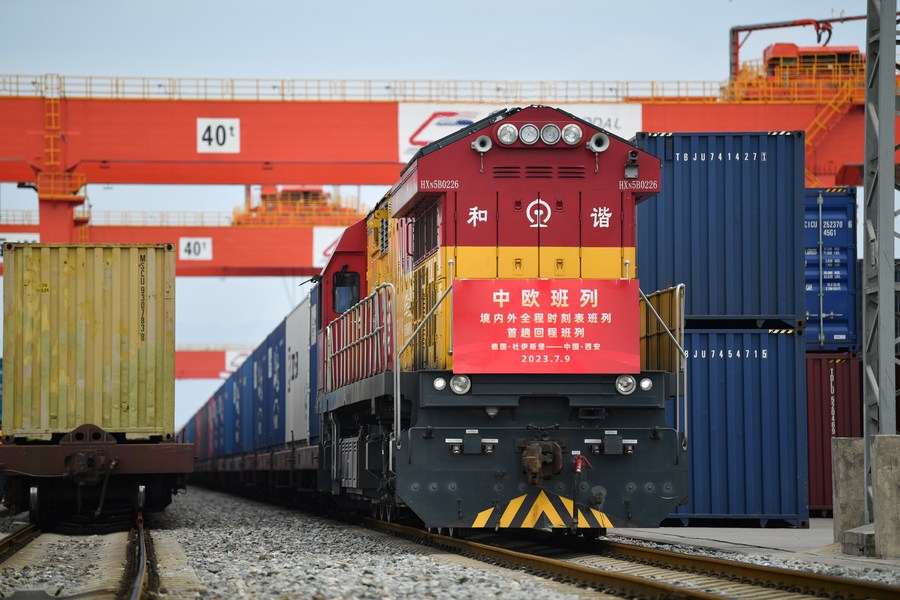China has conducted some policy rate adjustments as part of efforts to shore up economic recovery. $BABA $JD $BIDU $NTES $BYD
The People’s Bank of China (PBOC), the country’s central bank, cut the interest rate of the one-year medium-term lending facility (MLF) from 2.65 percent to 2.5 percent, injecting 401 billion yuan (about 55.64 billion U.S. dollars) into the market.
At the same time, the PBOC conducted seven-day reverse repos worth 204 billion yuan at an interest rate of 1.8 percent, down from 1.9 percent. Later the same day, it lowered the overnight, seven-day and one-month interest rates on its standing lending facility all by 10 basis points to 2.65 percent, 2.8 percent and 3.15 percent, respectively.
The interest rate lowering is to reduce the financing cost for the real economy, and prevent funds from simply circulating in the monetary market for the sake of arbitrage, said Wang Qing, an analyst at Golden Credit Rating.
China’s yuan-denominated loans rose by 345.9 billion yuan in July, decreasing by 349.8 billion yuan from the same period last year, and industry insiders believe that it reflects that the foundation for economic recovery needs to further consolidate besides seasonal factors.
“The endogenous driving force for economic recovery is still not strong, while the effective demand is insufficient,” said Wen Bin, chief economist of China Minsheng Bank, adding that more counter-cyclical adjustment is needed to perk up confidence and stabilize expectations and growth.
As the MLF interest rate usually acts as the anchor for the loan prime rates (LPR), the pricing reference for bank lending, experts predict that the LPRs are likely to be lowered this month.
The slight decline would be beneficial to monetary credit growth, promoting the decrease of the comprehensive financing costs for enterprises and the credit rates for residents while keeping them stable overall, said Zhang Xu, an analyst with Everbright Securities.
Looking ahead, experts say that China still possesses room to step up counter-cyclical adjustment with monetary policies.
The country has not implemented strong stimulus policies in the past three years, so it still has relatively large policy space and ample policy tools, said Dong Ximiao, chief researcher with Merchants Union Consumer Finance Company Limited, noting that the weighted average reserve requirement ratio (RRR) for Chinese financial institutions now stands at 7.6 percent, providing room for further cuts.
He said the RRR cut is expected to inject liquidity into the banking system, reduce banks’ capital costs to support the real economy, and send clear policy signals to the market.
Moving forward, China’s monetary policy needs to be more powerful and targeted. It needs to enhance synergy with fiscal policies to create a favorable financial environment to advance the high-quality development of the economy, said Bruce Pang, the Greater China chief economist of real estate and investment management services firm JLL.
China’s outstanding balance of structural monetary policy instruments reached 6.9 trillion yuan (about 957.3 billion U.S. dollars) as of the end of June, data from the People’s Bank of China (PBOC), the central bank, showed Thursday.↳
In a quarterly report, the central bank said that the amount stayed at a proper level and that these instruments prioritized fields that most needed financial support, including low-carbon development, scientific and technological innovation, and inclusive financing.↳
In recent years, the PBOC continuously adjusted and improved its structural monetary policy tools, the report said, adding that the outstanding balance of structural monetary policy instruments accounted for 16 percent of its total assets, which was at a similar level compared to other markets such as the euro-zone, the UK, and Japan.↳
As of the end of June, the central bank’s refinancing for agriculture stood at 565.8 billion yuan, while the amount for small and micro-sized firms stood at a little more than 1.42 trillion yuan.↳
The central bank also supported commercial banks to increase the amount of lending through micro-credit schemes by 2.7 trillion yuan. The report showed the outstanding balance of special-purpose refinancing for carbon-reduction increased by 143.3 billion yuan compared to the start of 2023.↳
As of the end of June, the central bank’s loan support scheme for the property market stood at 500 million yuan. The scheme will be extended until May 2024, according to the report.
China’s banking financial institutions saw an increase in total assets, data from the National Financial Regulatory Administration showed on Friday.
The local and foreign currency assets of these institutions totaled 406.2 trillion yuan (about 56.4 trillion U.S. dollars) at the end of June, up 10.4 percent year on year.
A breakdown of the asset data showed that large commercial banks accounted for 42.2 percent of the total, while joint-stock commercial banks contributed 17.1 percent.
The country’s commercial banks reaped combined net profits of 1.3 trillion yuan in the first half of 2023, up 2.6 percent year on year.
By the end of June, the non-performing loan ratio of commercial banks stood at 1.62 percent, flat with that at the end of March.
China’s three stock exchanges in Shanghai, Shenzhen and Beijing will cut the handling fees in stocks trading from Aug. 28 to spur the market, the securities watchdog said on Friday.
The Shanghai and Shenzhen bourses will axe the handling fees in A-share and B-share securities trading by 30 percent, or from 0.00487 percent of the trading value to 0.00341 percent, according to the China Securities Regulatory Commission.
After a 50 percent cut in such fees in Dec. 2022, the Beijing Stock Exchange will lower this fees by another 50 percent from 0.025 percent to 0.0125 percent.
The watchdog said it will further encourage cuts in brokerage commissions to reduce investors’ costs in trading.
Shayne Heffernan









